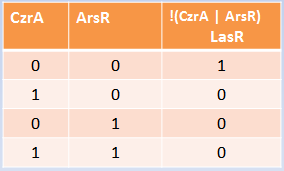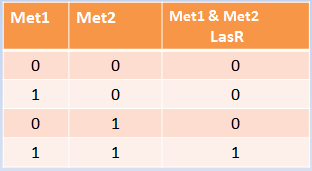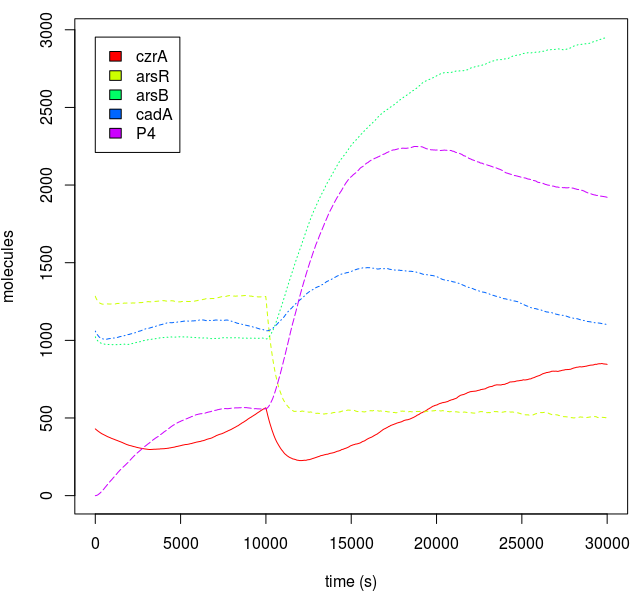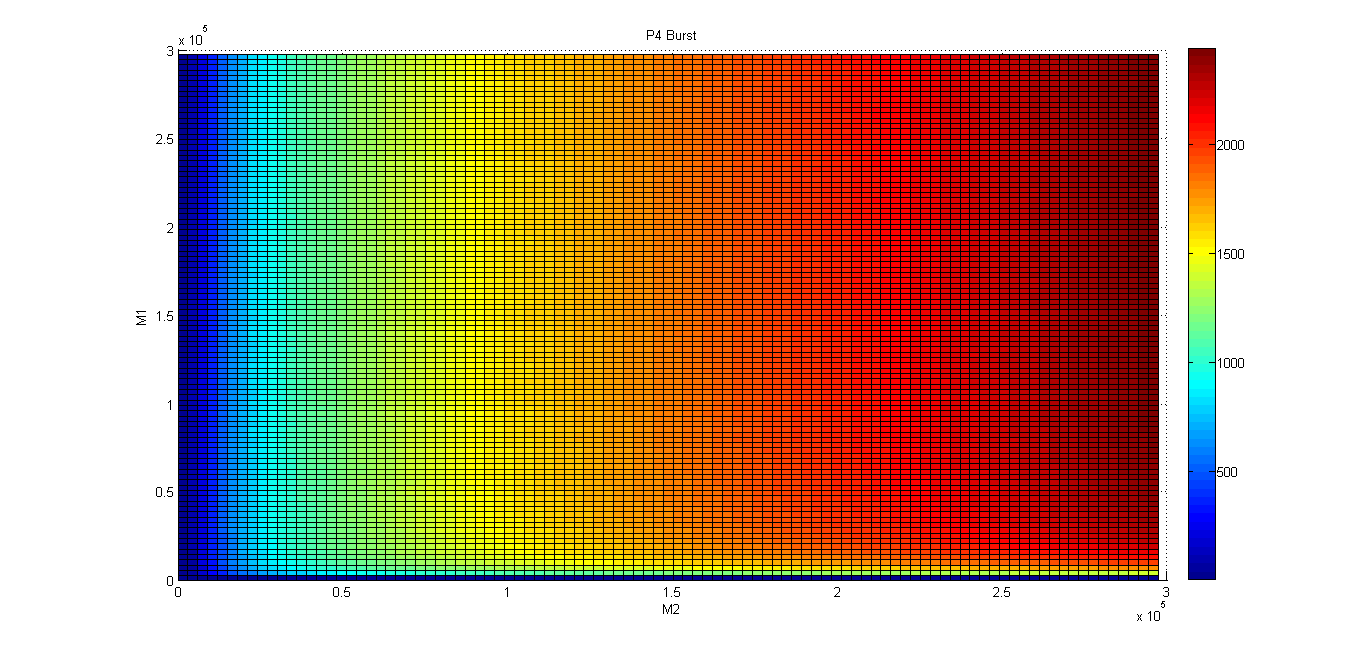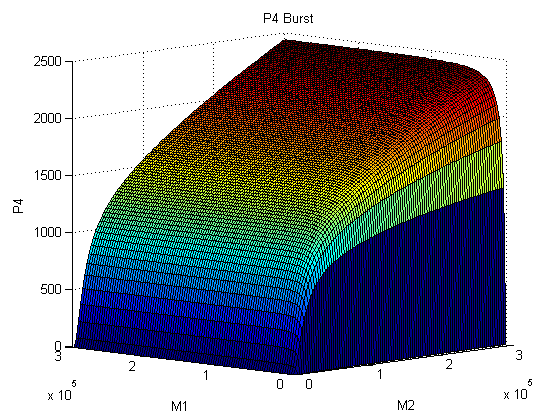Team:UNAM Genomics Mexico/Modeling/Heavy Metal AND
From 2012.igem.org
| Line 57: | Line 57: | ||
Metal homeostasis in the cell involves an effective response in order to withstand possible stress conditions in which high concentrations of heavy metals are involved. Both approaches, ODEs with Matlab and the stochastic one with kappa, give us similar results. First, we were able to see that the AND response is not as sensitive to higher concentrations. For the AND to have a good performance, low concentrations of Met 1 and 2 are required. As we said, we infer that metal response is a fast process. The accumulation of the output protein shows a sudden increase in production resulting from a very small change in metal concentrations. Another remarkable fact is about the role each TF (CzrA and ArsR) has. Since ArsR represses itself, its production has a succession of spikes. Nevertheless, CzrA increases its production if the metal concentration within the cell also increases, but it doesn’t have a drop in production because their decay depends only on the dilution and degradation of the protein. That way, the effects of CzrA are more notable than ArsR. This is reflected in a greater contribution of Met1 in the regulation of the AND promoter than that of Met2.<br /> | Metal homeostasis in the cell involves an effective response in order to withstand possible stress conditions in which high concentrations of heavy metals are involved. Both approaches, ODEs with Matlab and the stochastic one with kappa, give us similar results. First, we were able to see that the AND response is not as sensitive to higher concentrations. For the AND to have a good performance, low concentrations of Met 1 and 2 are required. As we said, we infer that metal response is a fast process. The accumulation of the output protein shows a sudden increase in production resulting from a very small change in metal concentrations. Another remarkable fact is about the role each TF (CzrA and ArsR) has. Since ArsR represses itself, its production has a succession of spikes. Nevertheless, CzrA increases its production if the metal concentration within the cell also increases, but it doesn’t have a drop in production because their decay depends only on the dilution and degradation of the protein. That way, the effects of CzrA are more notable than ArsR. This is reflected in a greater contribution of Met1 in the regulation of the AND promoter than that of Met2.<br /> | ||
<br /> | <br /> | ||
| + | |||
| + | |||
| + | [[File:Metal_burst_2.png | center]] | ||
| + | [[File:UNAM_GENOMICS_MEXICO_Metal_burst_3D_2.png | center]] | ||
}} | }} | ||
Revision as of 07:29, 25 October 2012

AND's Results
Metal AND
Our system consists of a hybrid promoter which contains binding sites for two transcription factors that act as repressors, CzrA and ArsR. In the presence of Met1, CzrA losses affinity for its binding site.
Similarly, if there is Met2 in the cell, ArsR also dissociates itself from its binding site. Taking into account these facts, unless Met1 and Met2 are present in the culture, we can say that the genes under this hybrid promoter will be repressed, just like a AND gate should function!
Repressors
Inputs
Kappa
There is no metal catabolism, so metals just reach an equilibrium and non-toxic concentration within the cell through exporting it out of the cytosol, maintaining the concentration constant. This makes the behavior of a single burst or a continuous dose similar, because the metal levels in just one dose will be constant since metals won’t be degraded.
Transfer Function
We were interested in modelling the output of our logic gates based on the input. This is called the "Transfer function". Imagine this process like a black box that will give you the dynamic concentration through time of whatever is downstream of the "AND" when you feed it with input data. It doesn't matter if it’s a single input burst or a continuous input.
Our logic AND gate is fully dependent on the intracellular concentrations of the inducers (meaning metal ions).
Then, to accomplish our duty in model, we use the "Transfer Function", for which it is necessary to take into account the regulation and dynamics of the endogenous B. subtilis intake-efflux system that controls the intracellular concentrations of Heavy Metals and Sugars. All of this is going to be the "Black Box".
So, our first task was to reconstruct the regulatory network of B. subtilis for the intake-efflux systems. The regulation data was retrieved from several papers and databases like [http://bsubcyc.org/ http://bsubcyc.org/]
Metal homeostasis in the cell involves an effective response in order to withstand possible stress conditions in which high concentrations of heavy metals are involved. Both approaches, ODEs with Matlab and the stochastic one with kappa, give us similar results. First, we were able to see that the AND response is not as sensitive to higher concentrations. For the AND to have a good performance, low concentrations of Met 1 and 2 are required. As we said, we infer that metal response is a fast process. The accumulation of the output protein shows a sudden increase in production resulting from a very small change in metal concentrations. Another remarkable fact is about the role each TF (CzrA and ArsR) has. Since ArsR represses itself, its production has a succession of spikes. Nevertheless, CzrA increases its production if the metal concentration within the cell also increases, but it doesn’t have a drop in production because their decay depends only on the dilution and degradation of the protein. That way, the effects of CzrA are more notable than ArsR. This is reflected in a greater contribution of Met1 in the regulation of the AND promoter than that of Met2.
 "
"








